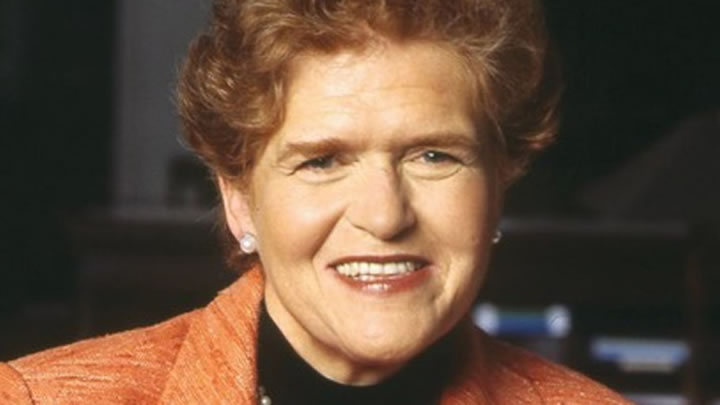“We can’t let anti-Semitism define us,” says award-winning author and scholar Deborah E. Lipstadt, to whom media, communal leaders and students often turn for words of wisdom after terrorist attacks against Jews in Europe and tragic hate crimes in America.
In her new book, Antisemitism Here and Now (Schocken Books, New York, 2019), Lipstadt, Emory University Dorot professor of modern Jewish history and Holocaust studies, asserts, “Jewish tradition in all its manifestations – religious, secular, intellectual, communal, artistic, and so much more – is far too valuable to be tossed aside and replaced with a singular concentration on the fight against hatred.”
Yet even though Lipstadt has devoted most of her career to studying the persecution of Jews, that is not the organizing principle of her life. Her Jewish identity remains driven by the rich teachings and traditions, culture and history.
A pivotal chapter in her illustrious career was featured in the 2016 film Denial, based on her book by the same name and her previous book, History on Trial: My Day in Court with David Irving. It spotlights her fighting a defamation suit brought against her by Irving, a British Holocaust denier who lost his case in 2000.
Fast-forward two decades. She neither brushes aside the uptick in anti-Semitic rhetoric and incidents nor dismisses as paranoid the concerns of those who react strongly to them. Far from it. Using the device of a series of letters between her and two composite characters, a Jewish college student named Abigail and a gentile law professor colleague named Joe, the author looks at the numerous manifestations of contemporary anti-Semitism – such as Paris, Pittsburgh, Brussels, Berlin, Charlottesville and Chicago – and provides history for context.
In the 21st century, armed guards have become commonplace in front of synagogues, and Jewish communal organizations have instituted tight security measures. In some parts of the world Jews cover their heads with baseball caps rather than skullcaps to try to avoid revealing their religion.
In an author’s voice that has been described as calm, lucid, evenhanded and carefully non-inflammatory, Lipstadt explores the many faces behind anti-Semitic attacks. They include the political left, political right, neo-fascist, radical Muslim, thrill offender, and white supremacist presenting as average Joe sporting a polo shirt, khaki pants and all-around Brooks Brothers look.
Lipstadt awakens readers to the variety of disguises anti-Semitism adopts. For instance, she exposes the disconnect of people who assert they aren’t anti-Semitic but merely anti-Zionist. In another example, she reports how a large number of “average Joes” played a central role in a 2013 study by the Technical University of Berlin. Lipstadt says the university examined the hate letters, e-mails and faxes that the Israeli embassy in Berlin and the Central Council of Jews in Germany received during the previous decade. Sixty percent of the diatribes came from educated, middle-class Germans, including attorneys, scholars, doctors, priests, professors, and university and secondary school students. No matter which side of the political fence they hailed from, their communication invoked classic anti-Semitic stereotypes.
While the canards they express about Jews aren’t new, such views tend to increase when there is populist resentment, according to Lipstadt. She notes this is what we are seeing in many parts of the world.
Social media gives these views wings. Hate proponents can anonymously spew their venom worldwide. By contrast, she writes, “Publications attacking anyone they considered an enemy used to be mailed in plain envelopes from anonymous post office boxes.”
What do we make of familiar explanations, such as by those people who declare themselves anti-Israel but not anti-Semitic?
Lipstadt declares, “It is hard, if not impossible, to explain something that is essentially irrational, delusional, and absurd. That is the nature of all conspiracy theories, of which anti-Semitism is just one.” Anti-Semitism conjures up an evil image of a Jew that does not exist – and then finds it everywhere.
She purposely lowercases “antisemitism”, determined that it doesn’t deserve the dignity of capitalization.
Balance the ‘Oy’ with the Joy
Lipstadt trains her sites not so much on what anti-Semites might do to Jews but rather what we might do to ourselves because of this persistent hatred. She implores us not to let the fight against anti-Semitism become the sum total of our Jewish identity. Don’t elevate it or its perpetrators in importance. Make a conscious shift from perennial victim, which affords the haters control over our destiny. Instead, rejoice in our heritage and who we are.
She is careful to balance the negative with the positive. “In the decades since the Holocaust, there has been an extraordinary resurgence of Jewish life in Europe. And Jewish life in the United States flourishes in a way that would have been inconceivable to Jews living in America before World War II.”
In short, Lipstadt urges Jews to balance the “oy” with the joy. Learn about Jewish tradition and cultural, literary and philanthropic accomplishments. “Appreciate that and build on it. And study Torah, and learn positive influences.”
Her philosophy is to savor Jewish culture because of the amazing things our heritage and tradition represent. “Jewish culture and Jewish history constitute the foundation of who I am.”
“Jewish tradition was the drummer to which I grew up,” Lipstadt told Aish.com. Thanks to her modern Orthodox background, learning and insights from Jewish teachings, she is able to transmit that tradition to others.
For instance, last week’s Torah portion suggests that if you see your enemy’s donkey has fallen because its load is too heavy, lift up the animal with your enemy. “Work together with the person with whom you have differences and maybe you’ll resolve some of those differences. I think that’s a tremendous insight. There’s so much like that in our Torah. It’s a way of looking at and being in the world.”
[Published on Aish.com, February 5, 2019]

